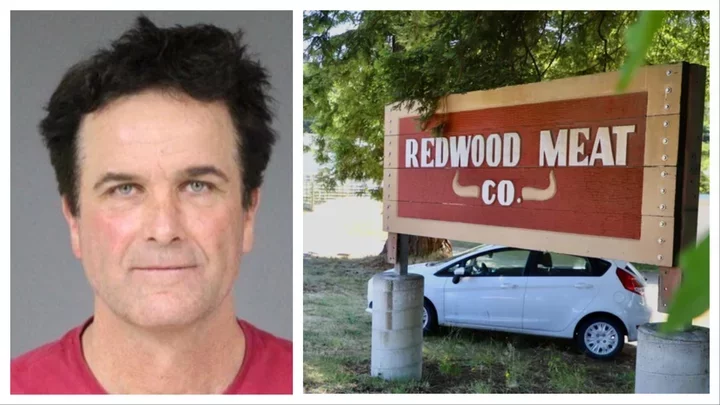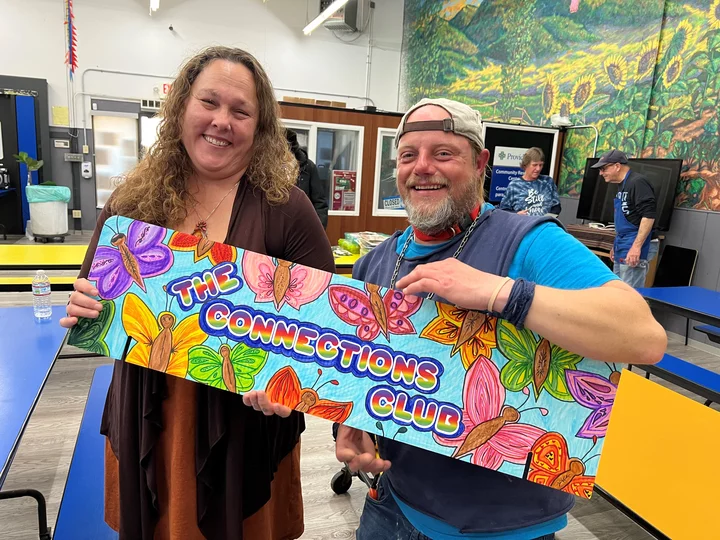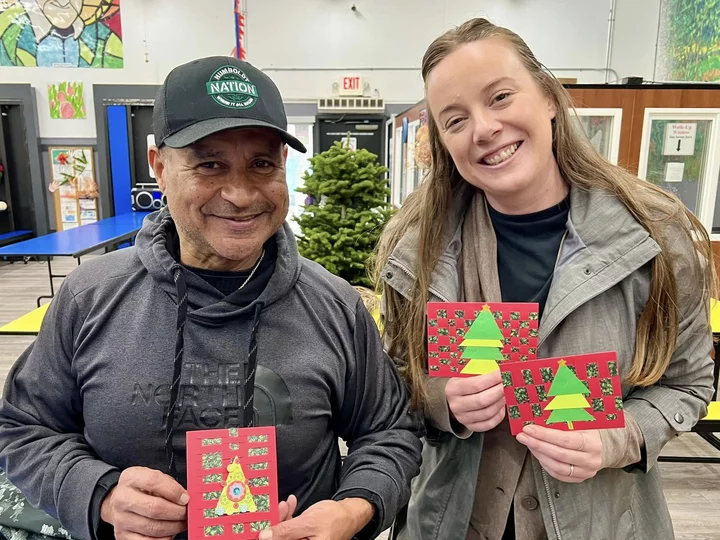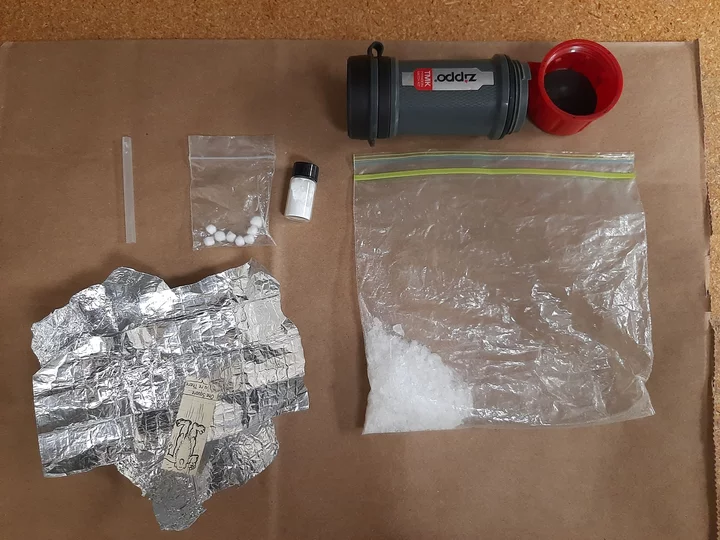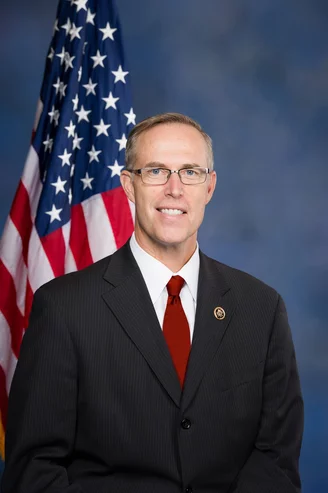OBITUARY: Sandi Kay Bean Branson, 1941-2024
LoCO Staff / Friday, Dec. 20, 2024 @ 6:56 a.m. / Obits
Sandi Kay Bean Branson went home to be with her savior Jesus Christ on
December 14, 2024. She went in peace at her favorite time of the year, Christmas, surrounded
by her children and grandchildren. What a celebration for her up there where she will be met by
many loved ones who are there already, including dad, Aunt Tammi, and many others.
Sandi was born in Eureka on July 2, 1941 to Leonard and Alice Scott.
She spent almost her entire life in Eureka, graduating from Eureka High in 1959, and afterwards leaving for a short time to attend Life Bible College in Los Angeles. She went on to work as a secretary for close to thirty years, first at Arcata Christian School, and then at McMurray and Sons Roofing. At Arcata Christian she truly made an impact on the families and staff and is still treasured by many who were associated with the school during her time there. She maintained many of those relationships throughout her entire life and was a foundational part of the school’s beginning years. The same can be said of her time at McMurray and Sons, where her grace and warmth brought an element of positivity and joy to any that she encountered. Her daughters and granddaughters followed in her secretarial footsteps. The experience her daughters had of having their mom be the school secretary and her granddaughters had at an early age of getting to go to work with grandma were no doubt formative, setting an example that paved the way toward their own future careers.
She was married to our dad, William Albert (Bill) Bean, over the course of about 35 years until he went to heaven, in 2014. They had three children, nine grandchildren, and nine great-grandchildren. Together they had a household full of laughter, singing and love, a haven for her children and later grandchildren, who would often wait in excited anticipation for their turn to spend the night at Grandma and Grandpa’s. We are happy that he was there waiting for her arrival in heaven and that they are reunited. She married Darrell Branson in October 2015. They were married until her death. She loved both our dad and Darrell very much.
Sandi had a talent and a love for singing that she passed on to her children, grandchildren, and great grandchildren. She shared her talent throughout her life in various ways, from church choirs, being a part of a singing trio and singing quartet, to singing to her children and grandchildren and teaching them her favorite hymns. She also enjoyed crossword puzzles, cross stitching, and painting, hobbies that she shared and passed down to her grandchildren.
She loved all her friends greatly but especially her BFF Barbara (McMurray) Wallis.
She was lovingly known as “Aunt Sandi” to quite a few, and whether those were blood relations or not, Sandi loved them as if they were her own. If you were blessed to call her a friend, know that you were genuinely loved, cared about and prayed over. She was the most loving, generous, forgiving, kind person you could ever meet. Even those who entered her life as adversaries soon became her friends, as she truly shone the light of Christ, His grace and love reflected in how she lived her life. She cared most to leave one legacy, and that was her love for Jesus and she wanted everyone to know Him, too. Her desire is for us all to be reunited in heaven, rejoicing alongside her and our dad. Our mom wanted us to say to all who knew her, her prayer was that she left a witness of who Jesus was in her life. Her faith was the utmost toher. She loved passing it on! We will miss her so much and will be looking forward to being reunited with her again.
She is preceded in death by her first husband William Albert Bean, her parents Leonard and Alice, and her siblings Dick Scott, Doris Lawyer, and Ron Scott.
She is survived by Darrell Branson, her children Kelli (Mark)Wight, Shelli (Randy)Davis, and Troy (Rosa) Bean. Her grandchildren Krissi (Cody) Schuetzle, Matthew Wight, Hunter Wight, Zachary (Hannah) Davis, Kayla (Joe) Davis, Jordan (Richelle) Davis, Noah (Rachael) Davis, Adara Bean, Billy (Maricela) Bean. Her legacy great grandchildren Jericho Allen, Zephaniah Allen, Randee Davis, Jordyn Davis, Eden Davis, Courtland Davis, Rhys Davis Joelle Davis, and Coco Bean. Her children, grandchildren and great grandchildren were her absolute treasures. Also she leaves behind many nieces and nephews and their families. Mike, Linda Kent Lawyer, Judy and Darby, Susie (Kent) Seely, Chris (Rick) Bailey Kim Scott and family. Mark and Christopher Scott and families. She is also survived by two sisters in law, Sugar (Art) Tober, Edna(Loren) Steele.
We would like to thank Hospice of Humboldt, Rosa, and all who came in to help us as her time here on earth came to an end. A memorial will be held at Coastline church in Bayside (Indianola off ramp) on Friday , December 27 @ 2:00pm. Any who would like to come and honor her life are welcome to attend. There will be an opportunity there to share any special memories that you had with our mother.
“Trust in the Lord with all your heart, and lean not on your own understanding; In all your ways acknowledge Him, and He shall direct your paths.” Proverbs 3:5-6
###
The obituary above was submitted on behalf of Sandi Branson’s loved ones. The Lost Coast Outpost runs obituaries of Humboldt County residents at no charge. See guidelines here. Email news@lostcoastoutpost.com.
BOOKED
Today: 4 felonies, 10 misdemeanors, 0 infractions
JUDGED
Humboldt County Superior Court Calendar: Today
CHP REPORTS
22650 Oak Ln (HM office): Trfc Collision-Unkn Inj
W End Rd / Barley Rd (HM office): Trfc Collision-1141 Enrt
609 Indian Meadows Dr (YK office): Trfc Collision-Minor Inj
5500 Mm101 N Men 55.00 (HM office): Assist with Construction
ELSEWHERE
KINS’s Talk Shop: Talkshop November 11th, 2025 – DJ Broom
RHBB: Green Diamond Conducting Prescribed Burns Near Orick, Big Lagoon, and Redwood Creek
The Guardian: Trump officials set to approve ‘forever chemical’ as pesticide ingredient
The Atlantic: Why the Democrats Finally Folded
OBITUARY: John Edward Livingston, 1937-2024
LoCO Staff / Friday, Dec. 20, 2024 @ 6:56 a.m. / Obits
John Edward Livingston passed away peacefully, surrounded by family, in Eureka, on
December 14, 2024.
John was born in Eureka on November 28, 1937 to Edward and Dorothy Livingston. Except for a stint in the military, John lived his whole life in Eureka. It was here that he took an early interest in all things mechanical. He honed his skills as a mechanic by working on friends’ and relatives’ cars, trucks, and boats. He was known to help most anyone with car problems. In high school, John enjoyed taking auto shop classes from his favorite teacher, Charlie Dryer. John remembered that Charlie sometimes let him drive the Cat, while working on the Albee Stadium field and also doing some grading at the mouth of Elk River. John and his friends also had their own car club at Eureka High. Two years after high school, John found his dream job. He was hired as a heavy duty diesel mechanic at Callison Truck Lines. There he made many lifelong friends as well as being mentored by some of the best mechanics around.
In 1962, John was drafted into the army and headed off to basic training at Fort Bragg, North Carolina. After basic, John was sent to New Mexico to train and work on missile fuselages as an atomic weapons specialist. After three years, John was honorably discharged as a SPC-4. He returned to Humboldt County just in time to help deal with the devastation of the 1965 flood. John also returned to his old job at Callisons. He renewed friendships with his coworkers, especially one named Sparky. After a few years, Callisons was bought by Nielson Freight Lines and John worked there until it closed its doors in the 1980s. Then John started his own business, J & S Repair. Besides walk in clients, John had several truck maintenance accounts, one being with the Humboldt Fire District. But John soon tired of self-employment and found a job with Eureka City Schools as a mechanic for their buses and other vehicles. He was well liked by all the drivers and staff and soon found himself in charge of the bus garage for the several years until his retirement.
In 1965, John married Mary Frances Kutil. They had one son, Frank D Livingston. Mary and John divorced after a few years, but remained friends until Mary’s death earlier this year. In 1978, John married Sherry St. Clair. They had one son, John E. Livingston, Jr. John also became the father of Sherry’s two boys, Clyde and Eugene, and he treated the two as his own.
Growing up in Humboldt County, John enjoyed many outdoor activities, especially hunting. Duck hunting was one passion. Before he was old enough to drive, he and some friends would catch an early morning city bus wearing their hunting clothes and carrying their shotguns. The friendly bus driver would drop them off at a Eureka wharf so they could rent a skiff and row out in the bay to hunt. Deer hunting was John’s other passion. He would hunt with his best friend, Alvin “Bud” Tompkins and Bud’s father, Herman and a favorite uncle, John MacMillen. Often, Herman would drop the boys off on South Fork Mt. near Horse Ridge Lookout. They would stay a week, camping, hunting, and riding motorcycles.In retirement, John and Bud took John’s sons and grandsons deer hunting at a hunting camp near Deer Lick Springs. John also took the boys duck hunting on Humboldt Bay. He even helped his sons build a floating duck blind out of an old wooden boat. John loved hunting brant and was a gifted brant caller. Fellow hunters thought he was the best caller they had ever heard.
John helped his best friend, Bud, build an ocean going fishing boat. Bud built the boat, but John made it run. The carpenter and the mechanic made quite a pair. They named the boat the O’Nansea and enjoyed many hours of fishing and crabbing. Son Frank takes the O’Nansea out fishing to this day.
In later life, John became a true San Francisco Giants fan. He would watch most every game with his beloved dog, Heidi. John loved all animals and had numerous pets (too many to count) over the years. Heidi will miss John more than we will ever know. John was preceded in death by his parents, Edward and Dorothy Livingston, special uncle, John MacMillen, loving wife, Sherry Livingston, and several other dear friends and relatives.
John is survived by brother Bill Livingston (Pat), son Frank Livingston (Michelle),Son John Livingston Jr. (Adrienne), son Eugene Livingston (Rachel), son Clyde Livingston, nephew Chris Livingston and sons Jared and Benjamin, grandchildren Bradley Livingston, Hunter Toland, and Rachael Livingston, and numerous friends, family, and coworkers, and most important, his beloved dog Heidi.
Funeral Services are being arranged through Sanders Funeral Home. Visitation at Sanders will be Friday, December 27 from 11 AM to 12 Noon. The funeral will be at Sanders on December 27 at 12:00 Noon. A veteran’s internment will follow at Sunset Cemetery. Pall Bearers will be Dan Wheeler, Frank Kutil, Bradley Livingston, John Livingston Jr, Don MacMillen, Mike Griffin, Hunter Toland.
The family would like to thank the staff at Provident St. Joseph Hospital for the special care they gave John these past few weeks.
In lieu of flowers, please make memorial contributions to Sequoia Humane Society, 6073 Loma Ave, Eureka CA 95503 or to any local non-profit.
###
The obituary above was submitted on behalf of John Livingston’s loved ones. The Lost Coast Outpost runs obituaries of Humboldt County residents at no charge. See guidelines here. Email news@lostcoastoutpost.com.
OBITUARY: Willetta Lourine Clark Tindall, 1929-2024
LoCO Staff / Friday, Dec. 20, 2024 @ 6:56 a.m. / Obits
In loving
memory of Willetta Lourine Clark Tindall
October
29, 1929
– November 21,
2024
Willetta passed away on Nov. 21, 2024 at the age of 95. She was born to the late William Leroy Clark and Ella Marie Felton Clark on October 29, 1929 in Corvallis, Oregon. She was preceded in death by her brother William Felton Clark of Tacoma, Washington, and her husband Warren E. Tindall of Bayside.
Willetta attended Fair Play Grammar School and Corvallis High School in Corvallis, Oregon. She worked in a local soda fountain before marrying her late husband, Warren E. Tindall. They were married on August 31, 1947 in Corvallis. They enjoyed 77 years of marriage. She is survived by her children, Janice Marie Tindall Murphy of Ryderwood, Wash., Dyanna Christine Tindall Gazzera of Redding, and Debra Kathleen Tindall Jones of Bayside, along with eight grandchildren and nine great-grandchildren.
Although Willetta described herself as a loving wife, mother and homemaker she was also an active volunteer in her community. She volunteered at the Sunny Brae Congregational Church typing and printing newsletters and program guides, and at Jacoby Creek Elementary School library in the 1970s and at the Congregational Church in Eureka in the 1980s. Her many hobbies included photography, painting, needle work, knitting, gardening, caring for the wildlife in her backyard sanctuary along the banks of Jacoby Creek in Bayside. Her pet cockatiels and parakeets were her special delight. She had numerous pen pal friends from all over the world and shared her art cards and letters with many who will cherish her memory.
The petals of her life fell one by one, each a gift of her heart till there were none. Her favorite hymns were: Morning Has Broken, God Be With You Till We Meet Again, In the Garden, It Is Well With My Soul, For the Beauty of the Earth, I need Thee Every Hour and We Gather Together. She was a member of the Congregational Church in Sunny Brae and Eureka, California.
“Remember
me when flowers bloom early in the spring.
Remember
me on sunny days in the fun that summer brings.
Remember
me in autumn as you walk through leaves of gold.
Remember
me in winter when all is icy cold.
Sanders Funeral Home is handling the arrangements and she will be buried next to her husband at Ocean View Cemetery.
###
The obituary above was submitted on behalf of Willetta Tindall’s loved ones. The Lost Coast Outpost runs obituaries of Humboldt County residents at no charge. See guidelines here. Email news@lostcoastoutpost.com.
Judge Says the Sale of Redwood Meat Co. to Ray Christie Did Not Violate Restraining Order
Ryan Burns / Thursday, Dec. 19, 2024 @ 3:29 p.m. / Courts
Christie (2018 booking photo) and Redwood Meat Co. (file photo).
PREVIOUSLY
- Humboldt Ranchers and Farmers Left Scrambling After Closure of Redwood Meat Co., the Region’s Only USDA-Certified Slaughterhouse and Processing Facility
- In Lawsuit, Minority Shareholders of Redwood Meat Co. Accuse Their Father and Cousin of Fraud, Embezzlement, Document Shredding and More
- Majority Owners of Shuttered Redwood Meat Co. Sell Their Shares to Accused Animal Abuser Ray Christie
- Attorneys Argue Over Legality of Redwood Meat Co. Stock Sale; Judge Keeps Restraining Order in Place as Civil Case is Continued to Next Month
###
The majority shareholders of Redwood Meat Co. did not violate the terms of a temporary restraining order when they sold their controlling interest in the company to notorious Arcata rancher Raymond F. Christie earlier this year, Humboldt County Superior Court Judge Timothy Canning ruled in a decision entered earlier this week.
Redwood Meat, a family-operated institution in Humboldt County and the region’s only USDA-certified slaughterhouse, has been shut down for more than six months, with former majority owners Ryan Nylander and his uncle, John “Punk” Nylander, citing an unsustainable increase in operations costs.
The company’s operations have since come under intense scrutiny as three of John Nylander’s children — Stephanie Nylander, Rachel Nylander Flores, and Russel Nylander — filed a lawsuit as minority shareholders, accusing John (their father) and Ryan (their cousin) of grossly mismanaging the family company through fraud, embezzlement, tax evasion and document shredding.
That case remains pending. Canning’s ruling pertains to the terms of a temporary restraining order — issued on July 31 and modified the following month — that prohibits Ryan and John Nylander from selling or transferring any Redwood Meat Co. assets or taking any actions that require shareholder approval.
In their lawsuit, the plaintiffs are seeking to prevent their father and cousin from disposing of any company assets without the consent of Redwood Meat Co.’s board or shareholders and keep them from destroying any more records while ensuring that board and shareholder meetings are properly held as necessary.
In August, the plaintiffs’ attorney, Cyndy Day-Wilson, argued that John and Ryan Nylander violated the terms of that restraining order by selling their shares to Christie, who was once convicted on 26 misdemeanor counts of dumping cattle carcasses within 150 feet of state waters and later faced felony animal cruelty charges based on cattle found starving or in otherwise poor condition at his ranch on the Arcata Bottoms. (The latter case was settled out of court.)
But Judge Canning ruled that John and Ryan were free to sell their shares to Christie because the stocks were their own personal property, not that of the company. And since the minority shareholders were offered the same price for their own shares, the plaintiffs have no grounds to cry foul or seek injunctive relief negating the sale, his ruling states.
But that doesn’t mean that the larger case can’t move forward.
“Because John and Ryan are no longer shareholders in Redwood Meat, the Court denies the request for preliminary injunctive relief as to them,” Canning’s ruling says, before adding, “Of course, they may still be subject to a claim for monetary damages, whether to the minority shareholders or derivatively to Redwood Meat.”
Judge Canning did enter a new preliminary injunction, though both parties have already agreed to its terms — namely, that Redwood Meat Co. is prohibited from:
- Selling any real or personal property that is the property of Redwood Meat Co., Inc., outside the ordinary course of business without shareholder approval at a properly noticed meeting;
- Destroying any records of Redwood Meat Co., Inc.:
- Taking any corporate action that requires shareholder approval under the Company’s bylaws, or under the Corporations Code, without prior shareholder approval at a properly noticed shareholder meeting; and
- Taking any action that is in violation of Redwood Meat Co., Inc.’s bylaws or the California Corporations Code.
The Outpost will continue to follow this case.
Connections Club Helps Eureka’s Homeless Community Craft Handmade Cards for the Holidays
Isabella Vanderheiden / Thursday, Dec. 19, 2024 @ 2:22 p.m. / Feel Good , Homelessness
Old Town Steward Kimberly Keisling and Free Meal Guest Chris show off the Connections Club sign. | Photos contributed by Hannah Ozanian.
###
Every Thursday for the last six weeks, a group of local homeless folks and volunteers has gathered at St. Vincent de Paul’s dining hall in Old Town Eureka for a community-building crafts session with the Connections Club, an outreach project of the city’s Old Town Stewards Program.
“We make cards, write letters and really just provide a space for people to connect,” Hannah Ozanian, a social services coordinator with UPLIFT Eureka, told the Outpost during a recent phone interview. “We’re trying to create a warm, welcoming space – not just for those folks that are struggling on the streets but also for our volunteers – where people can be together, meet with service providers and try to problem solve with this very challenging homelessness issue we have locally.”
Volunteers Douglas Carbonel and Logan Caswell show off their holiday tree cards.
###
The Connections Club meets every Thursday after Free Meal from 2 to 3:30 p.m. Before each meeting, Ozanian designs a themed card for attendees to use as inspiration, but everyone is encouraged to do their own thing.
“It’s usually just people socializing and coming together for a coloring circle,” she said, adding that they have stamps on hand if people want to send a card to a friend or family member. “Folks that are unhoused don’t really have time or space to sit down and write. To give them an opportunity to send a card to their family back home or give a card to whoever they’re camping with is really powerful. Last week, we had this guy who busted out, like, 12 cards to his family back in the Midwest. It was such a cool thing to see.”
The program is still in its early stages but, eventually, Ozanian hopes to expand the Connections Club to five days per week at various other locations around the city to get more people involved. Anyone and everyone is welcome to join.
“Just being together, I mean, that in itself is kind of revolutionary,” she said. “There’s a kind of awkwardness in it – even for the volunteers. They’re learning to be together, to listen to people and to value people. It’s important to have people come down to St. Vinny’s and meet people where they’re at. There aren’t many opportunities where people can have that experience, and I think everyone has something to offer up to this issue.”
If you have some extra craft supplies lying around, the Connections Club sure could use ‘em! Right now, they’re looking for blank greeting cards, envelopes, stamps, pens, pencils, markers and construction paper. They’re also looking for more volunteers.
“We have so many volunteers during the holidays and there’s a huge lull afterward,” Ozanian said. “There are still a lot of people that are in need of services after the holidays, maybe even more so. We’re trying to keep the momentum up and keep our presence alive.”
Interested in volunteering? You can fill out a volunteer interest form here. Have a few things you’d like to donate? Contact the Connections Club at oldtownstewards@eurekaca.gov.
###
Wanted Man Arrested in Loleta with Drugs, Lock-Picking Kit, Loaded Starter Pistol, Sheriff’s Office Says
LoCO Staff / Thursday, Dec. 19, 2024 @ 1:36 p.m. / Crime
Press release from the Humboldt County Sheriff’s Office:
On Dec. 18 at about 10:15 a.m., a Humboldt County Sheriff’s deputy was on patrol in the area of Singley Hill Rd. in Loleta. The deputy conducted an investigative traffic stop on a vehicle whose registration returned to Ryan Hill, age 39, of Ferndale. Hill had an outstanding warrant for his arrest.
The deputy contacted the driver, who was identified as Ryan Hill. Hill was subsequently placed under arrest for his outstanding warrant and his vehicle was searched pursuant to his probation terms; Hill’s probation terms include no firearms, weapons, or ammo, and to not use, possess, or traffic drugs. During the search, deputies located a clear baggie containing methamphetamine, drug paraphernalia, a large bag containing marijuana, a loaded starter pistol, and a lock picking kit.
Deputies measured and weighed and tested the methamphetamine, which totaled 15g, and the marijuana, which was 35.4 oz.
Hill was taken to the Humboldt County Correctional Facility (HCCF) and booked for the following charges:Anyone with information about this case or related criminal activity is encouraged to call the Humboldt County Sheriff’s Office at (707) 445-7251 or the Sheriff’s Office Crime Tip line at (707) 268-2539.
- Possess a controlled substance—HS 11377(a)
- Possess marijuana over 28.5g—HS 11357(b)
- Probation violation: rearrest/revoke—1203.2(a)
###
OUTPOST INTERVIEW: Huffman Voices Frustration With ‘Feckless Republicans’ as Government Shutdown Looms
Ryan Burns / Thursday, Dec. 19, 2024 @ 12:45 p.m. / Government
Right around noon today the Outpost spoke via phone with Rep. Jared Huffman — calling from Washington, D.C. — about the looming prospect of a federal government shutdown, which appears increasingly likely after President-elect Donald J. Trump denounced a stopgap spending bill, leaving Republicans without a strategy to fund the government.
GOP House Speaker Mike Johnson had managed to strike a bipartisan deal to keep the government running temporarily, but Trump publicly denounced the agreement after billionaire Elon Musk — the world’s richest man and Trump’s pick to run a new non-government agency called the Department of Government Efficiency — “spread misinformation about the deal and vowed political retribution against any lawmaker who supported it,” according to the New York Times.
The government will shut down this weekend if a deal is not reached.
Here’s our interview with Rep. Huffman, which has been lightly edited for clarity.
###
LoCO: Hi, Congressman Huffman. How are you?
Huffman: Well, it’s a frustrating day today in Washington.
Yeah, what’s the latest?
We were supposed to be voting on a bipartisan government funding deal that was worked out this week, and the goalposts have moved thanks to Elon Musk and Donald Trump.
Yeah, I was reading about Elon Musk tweeting a lot of misinformation about the deal yesterday. Is it your understanding that [those tweets] are what scuttled the deal?
Yeah. I mean, it was a combination of Musk and Trump, and you have all these feckless House Republicans who definitely value the demands of these two billionaires more than their oath of office.
If a deal is not struck by this weekend, can you talk about what effects that might have on on your constituents here on the North Coast?
Well, it’s serious, and unfortunately, I’ve lived through it twice before, so I have a pretty good idea. You’re going to be impacted in a whole bunch of different government services. Active duty military will cease to be paid. Veterans will have their benefits delayed, their claims with the VA [U.S. Department of Veterans Affairs] and other things are going to grind to a halt.
Federal agencies are finalizing plans right now to begin shutting things down, and so some of our public lands may cease to be accessible to the public; trash will pile up in parks; and basic sanitation and maintenance and things like that will cease to happen.
Do you have any indication of how there might be a path forward to reach a solution, or is it your prediction that this is going to indeed be a shutdown?
The obvious path forward is to put the deal that we reached, the bipartisan deal, up to a vote. It would pass, and this would quickly be over. So I’m hoping that after flirting with this terrible idea of a government shutdown, the grownups in the Republican caucus will realize this and bring that vote up.
You say it would pass, but Speaker Mike Johnson is in a position where the majority of his party has indicated that they are going to follow along with Trump’s wishes. You believe it would indeed pass if it was put to a vote today?
Yeah, it would, because Democrats would honor the deal. … We hold a majority in the Senate, and we hold enough votes in the House that, together with a few dozen Republicans, we could do it.
Do you have any hope that Speaker Johnson will call for a vote?
You know, it depends on whether he values his obligation to govern more than his political desire to hold the speaker’s gavel. That’s what this is all about. He’s in a pretty delicate position right now, because doing the right thing and funding the government may cost him his speakership.
Do you have any sense of whether he’s prepared to take such a stand?
It would be a rare profile in courage but, you know, hope springs eternal.
Is there anything else you’d like our readers and your constituents to know about the situation?
Just that I’m going to try to provide real-time updates on how the how any potential government shutdown could affect them, and my offices will stay open to help constituents with problems caused by a government shutdown. We’ve done this before. We work all the way through, and hopefully we’ll get the lights back on if this happens as quickly as possible.




